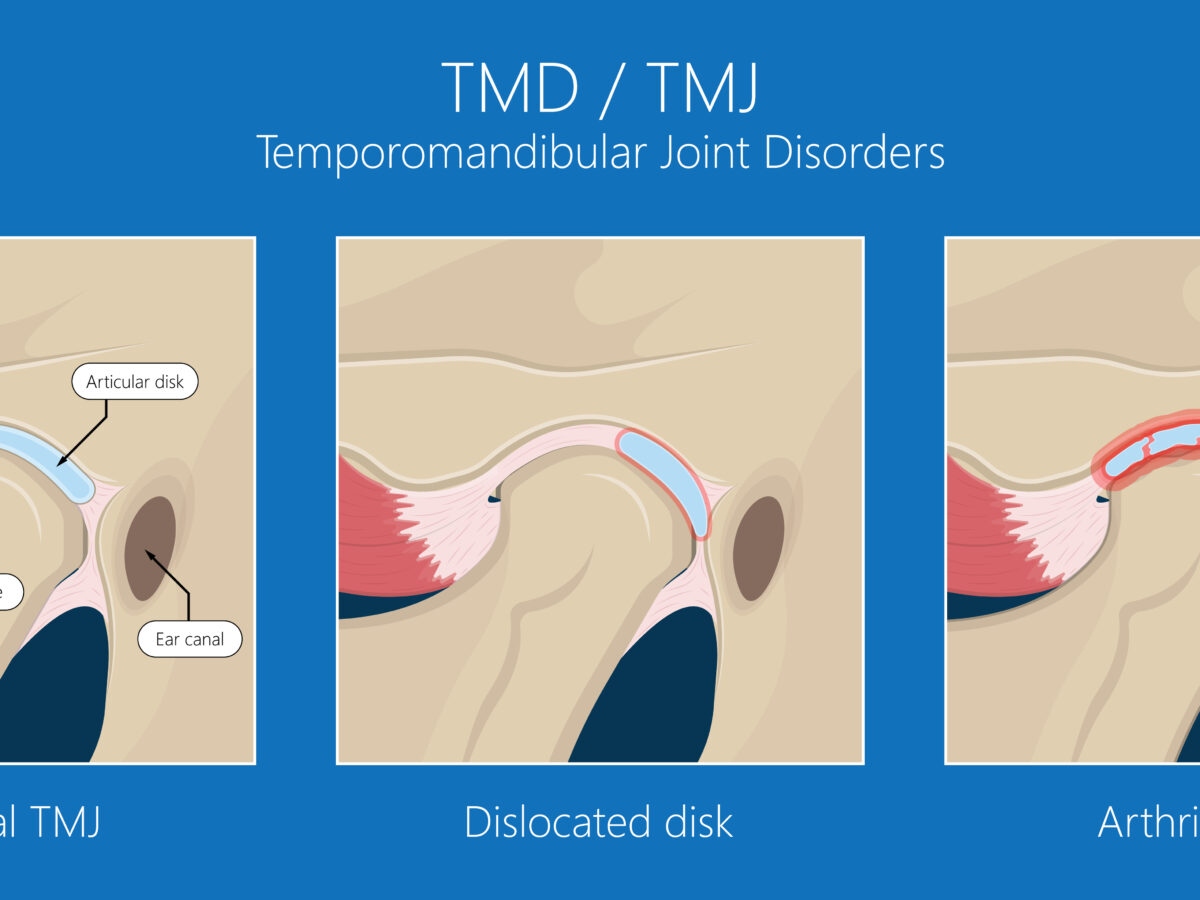The temporomandibular joint (TMJ) is a paired synovial joint in which the mandibular condyle is opposed by the mandibular fossa. This joint is capable of both gliding and hinge movements and responsible for the articulation of the mandibular condyle, articular disc, and squamous portions of the temporal bone. Between the mandibular condyle and the mandibular fossa, there is fibrous secondary cartilage. There is also an articular disc between the mandibular condyle and the mandibular fossa. The entire TMJ is encased within a capsule, which is lined by the synovial membrane which produces synovial fluid. The synovial fluid lubricates the joint to facilitate articulation and functional activities of the temporomandibular joint, while also transporting nutrients and waste products to and from the articular surfaces.
From an evolutionary standpoint, the TMJ is a relatively recent organ given its relation to the skeletal structure of mammals. In mammals, the articulation of the jaw joint occurs between the mandibular condyle and mandibular fossa. In contrast, the articulation of the jaw joint in non-mammals is between the quadrate on the skull and the articular on the lower jaw. The skeletal muscles which facilitate movement of the temporomandibular joint muscles are commonly referred to as the muscles of mastication. Muscles of the head and neck also provide secondary support during chewing. The masticatory muscles include the masseter, medial pterygoid, and temporalis. Another evolutionary aspect unique to mammals is the intra-articular disc, of which the microarchitecture is essential for proper TMJ function. Further studies are needed to determine if there is any functional relationship between the intra-articular disc and the lateral pterygoid muscle.
Temporomandibular disorders (TMDs) are defined as a group of pain conditions related to the temporomandibular joint, jaw muscles, and associated structures. The types of pain associated with TMDs can be primarily segmented into myofascial pain (muscle pain) and TMJ pathology. Pain that is felt in the periauricular region (tissues surrounding the external ear), the region of the temporomandibular joint, and/or pain felt in the head and neck muscles may be associated with a temporomandibular disorder. Patients suffering from TMDs most commonly experience pain, along with the possibility of limited mandibular movements and/or clicking, popping, or grating sounds. Other symptoms of TMDs may include earaches, headaches, and facial pain.
There is no standard test available to correctly diagnose all TMDs and there are a variety of known causes for TMJ. TMDs may be caused by facial trauma, teeth grinding (bruxism), malocclusion, stress, poor posture, or issues associated with the tissues surrounding the intra-articular disc. If you believe you are experiencing symptoms of a temporomandibular disorder (TMD), please call Dr. Federman’s office to schedule a comprehensive TMJ evaluation. If Dr. Federman believes you may be suffering from a temporomandibular disorder, he will work with you to identify the cause of your symptoms and possibly coordinate with other specialists to develop a customized treatment plan.

